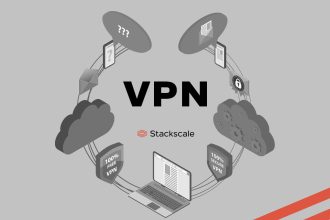Governance, Risk, and Compliance (GRC) is a plan for managing how an organization controls everything, including enterprise threat detection, spotting and handling risks, and following laws. Consider GRC as a structured method for successfully integrating IT with organizational objectives and managing risk and compliance.
A well-planned GRC strategy developed by industry professionals brings many benefits:
- Improved decision-making
- Better IT investments
- Elimination of silos and reduced fragmentation across divisions and departments
Several frequently asked GRC-related questions are addressed below.
What Does GRC Mean?
Some people mistake GRC for Governance, Risk, and Control. But it isn’t true, so let’s break it down.
Governance
It ensures that organizational activities, such as managing IT operations, are aligned to support its business goals.
Risk
The software ensures that any potential risk associated with an organization’s activities is identified and mitigated to support business objectives. In the context of ITDR (IT Disaster Recovery), this means having a comprehensive IT risk management process integrated into the enterprise risk management functionality.
Compliance
Using GRC solutions, we can be sure that internal activities are carried out under local laws and regulations. For example, the GDPR is vital for Europe. From a legal standpoint, ensuring that all internal and external activities comply with compliance standards is essential.
How Do GRC Solutions Work?
With GRC solutions, you can make policies and controls that fit with both regulatory and internal requirements, and you can organize and manage them easily. These cloud-based solutions are commonly used to automate numerous processes, resulting in heightened efficiency and reduced complexity.
Also, organizations develop a GRC framework that enables management and overarching companies to support their strategy. This allows professionals to see the effectiveness of their efforts and strategic decisions.
Efficient Implementation
The success of GRC software implementation lies in its adaptability to business operations. Any downtime in operations could lead to a significant loss of productivity and revenue.
Whether your organization is small or large, the primary objective is to optimize risk management in line with business goals while effectively managing risks and staying compliant with regulations.
An adaptable GRC software solution enables organizations to identify and mitigate risks proactively, streamline compliance processes, and make informed decisions based on real-time data.
This ensures business continuity, improves operational efficiency, and enhances the overall risk management framework, resulting in a more resilient and successful organization.
Business Benefits of GRC Solutions
GRC solutions are essential for businesses looking to stay ahead in today’s fast-paced, ever-changing world. The benefits of this technology are far-reaching, providing a range of advantages for companies across different industries.
Streamlined Risk Management
GRC solutions help businesses manage risks better by automatically identifying, assessing, and monitoring potential threats. This way, companies can quickly spot and reduce risks before they cause significant problems. It saves businesses from making expensive mistakes and helps them make better choices about future risks and opportunities.
Improved Compliance
This technology is also helpful in improving compliance for businesses. These solutions allow companies to track and manage their compliance requirements, ensuring that they follow all regulations. This can include things like data privacy or financial reporting regulations, which can help businesses avoid getting charged with expensive fines and penalties.
Enhanced Operational Efficiency
Enhanced operational efficiency is also possible through GRC solutions. Automated workflows, notifications, and alerts make sure that all necessary tasks are completed on time. This saves employees’ time, allowing them to focus on more important activities that add value to the company. This can help improve overall productivity and reduce the burden of manual tasks.
Bettered Customer Satisfaction
Lastly, GRC solutions can also boost customer satisfaction. Companies can build trust and improve their reputation by showing customers that they take compliance and risk management seriously. This can attract new customers and keep current ones, leading to more profits and financial success.
Conclusion
Before considering any software solution for your particular case, you need to prepare your environment first. This means assessing your organization’s risks and learning about controls.
- Do you have adequate management?
- Do existing controls work?
- Add controls where needed and fix those that don’t work correctly.
You also need to create a GRC structure. While GRC focuses intensely on IT, implementing the strategy affects the entire organization. It requires careful consideration of all the people and processes that will be affected.
GRC is, therefore, more than just a collection of organizational software tools. It spans all sectors, so your GRC software must be connected to your entire organization.













